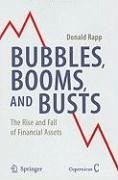The book describes historical boom/bust cycles including bubbles of the 1720s, the Florida land boom and the stock market in the 1920s, the depression of the 1930s, the S&L scandal of the 1980s, the great bull market of 1982-1995, the crash of 1987, the dot.com mania of 1995-2000, corporate swindles of the 1990s and 2000s, the sub-prime fiasco of the 2000s, and Japan in the late 20th century.
Most of the recent wealth generation has derived from increased debt and appreciation of paper assets. The architects of the new economics were Ronald Reagan and Arthur Greenspan. Inevitably, the US Government's cure for excessive spending and inadequate revenues is to increase spending and cut revenues. American voters must choose between "tax and spend" Democrats and "spend and borrow" Republicans. The theme of American finance was uttered by VP Cheney: "Deficits don't matter".
Dieser Download kann aus rechtlichen Gründen nur mit Rechnungsadresse in A, B, BG, CY, CZ, D, DK, EW, E, FIN, F, GR, HR, H, IRL, I, LT, L, LR, M, NL, PL, P, R, S, SLO, SK ausgeliefert werden.









